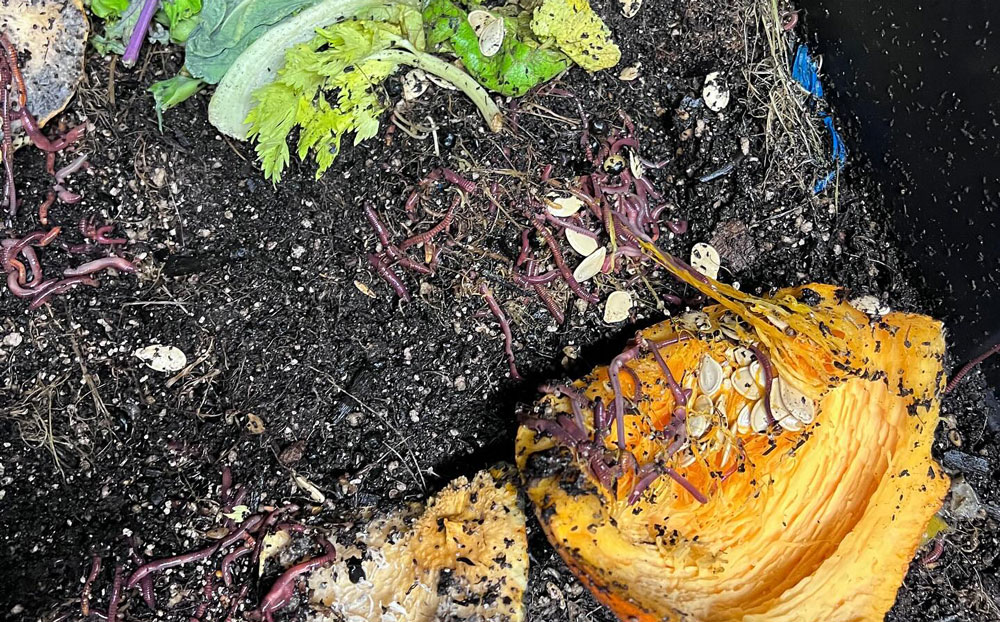Self-Sufficient U Blog
Contact
Clark County Extension Service
Amy Simpson, Horticulture
Cindy Ham, 4-H and Ag
JoAnn Vann, Family & Consumer Sciences
Phone: 870-246-2281
Email: clark-arkadelphia@uada.edu
Follow us on
Facebook
Clark County
Cooperative Extension Service
640 S 6th Street Suite B
Arkadelphia, AR 71923
Boost Your Garden with Worm Composting (Vermicomposting)
By: Amy Simpson, Agriculture County Extension Agent, Clark County
Looking for an easy way to enhance your garden's production and reduce waste? Consider vermicomposting, also known as vermiculture or worm composting.
What is Vermicomposting?
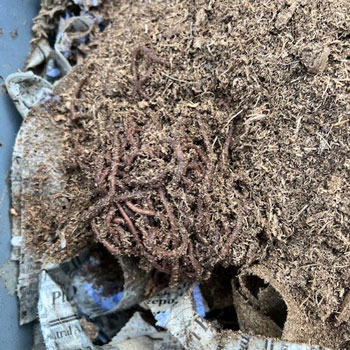 Vermicomposting converts kitchen scraps, shredded non-glossy paper, cardboard, brown
leaves, and more into nutrient-rich worm castings that promote healthy, thriving plants.
This low-maintenance method can be done indoors or outdoors and will improve vegetable
garden yield while boosting ornamental plant growth.
Vermicomposting converts kitchen scraps, shredded non-glossy paper, cardboard, brown
leaves, and more into nutrient-rich worm castings that promote healthy, thriving plants.
This low-maintenance method can be done indoors or outdoors and will improve vegetable
garden yield while boosting ornamental plant growth.
Setting Up Your Worm Bin
Start with a worm bin. You can either order one or easily DIY it—plenty of online tutorials are available.
Next, add bedding, such as shredded paper, cardboard, brown leaves, straw, sawdust, or store-bought worm bedding. Soak the bedding in water for 10 minutes, squeeze out the excess, fluff it, and fill the bin halfway. Mix in a handful of soil.
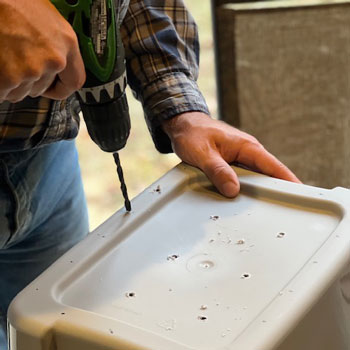
Drill holes

Add bedding
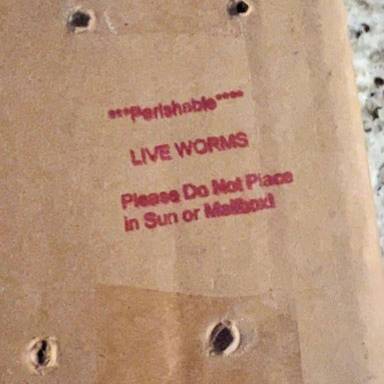
Now it's time for the worms!
Tips for Adding Worms
Gently add your worms. Red wigglers (Eisenia fetida) are the go-to for vermicomposting, though some vendors offer other composting species like Eisenia hortensis, Eudrilus eugeniae, and Perionyx excavatus. Avoid using worms from your yard. Aim for one pound of worms per square foot of bin space.
Feeding Your Worms
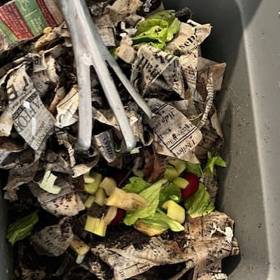 After a few days, you can start feeding your worms. Use a small garden tool to pull
back the bedding and add food to a different spot each time, covering it with two
inches of bedding. Wait until the scraps are consumed to avoid odors. Keep a spray
bottle nearby to mist the bedding if it dries out.
After a few days, you can start feeding your worms. Use a small garden tool to pull
back the bedding and add food to a different spot each time, covering it with two
inches of bedding. Wait until the scraps are consumed to avoid odors. Keep a spray
bottle nearby to mist the bedding if it dries out.
Feed your worms vegetable and fruit scraps (excluding citrus), coffee grounds, tea bags, moistened bread, shredded napkins, and crushed eggshells. Chop the scraps into small pieces to help the worms break them down faster. Store excess scraps in a lidded container or zip-top bag for later use.
What Not to Feed Worms
Avoid feeding worms meat, fish, dairy, greasy foods, bones, onions, garlic, tobacco, and pet feces.
Ideal Bin Conditions
Keep the bin at a temperature of 59-77°F. If the bin is outdoors, place it in the shade and insulate it with straw, insulation board, or blankets during colder weather.
Harvesting Vermicompost
Vermicompost is typically ready for harvesting in 3-6 months. You can use it immediately or store it for future use. Once the worms mature and start reproducing, you’ll have a sustainable source of high-quality soil amendment as long as the bedding stays moist and the bin is kept in proper conditions.
